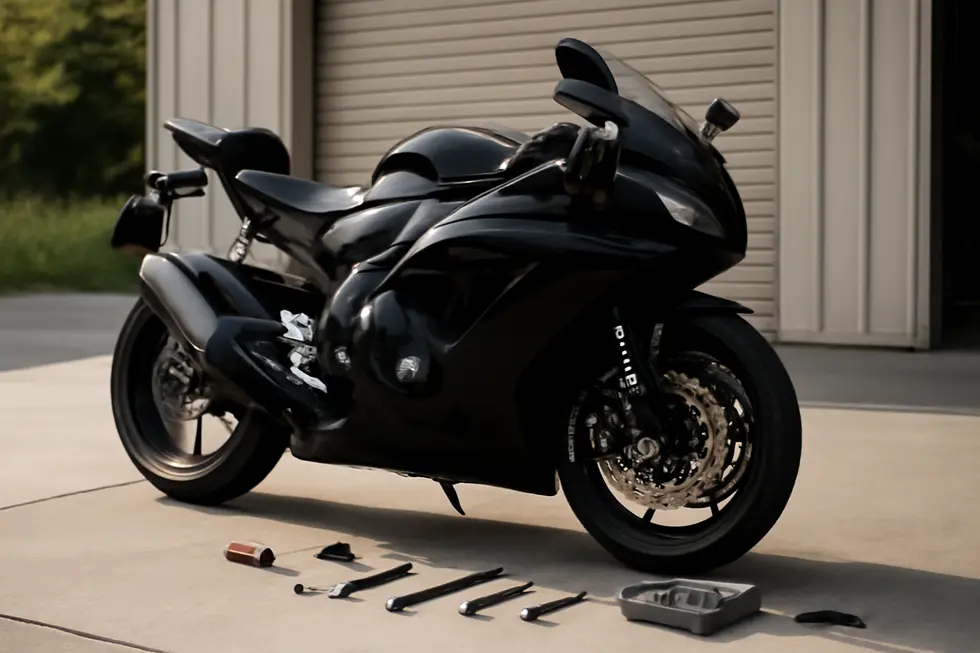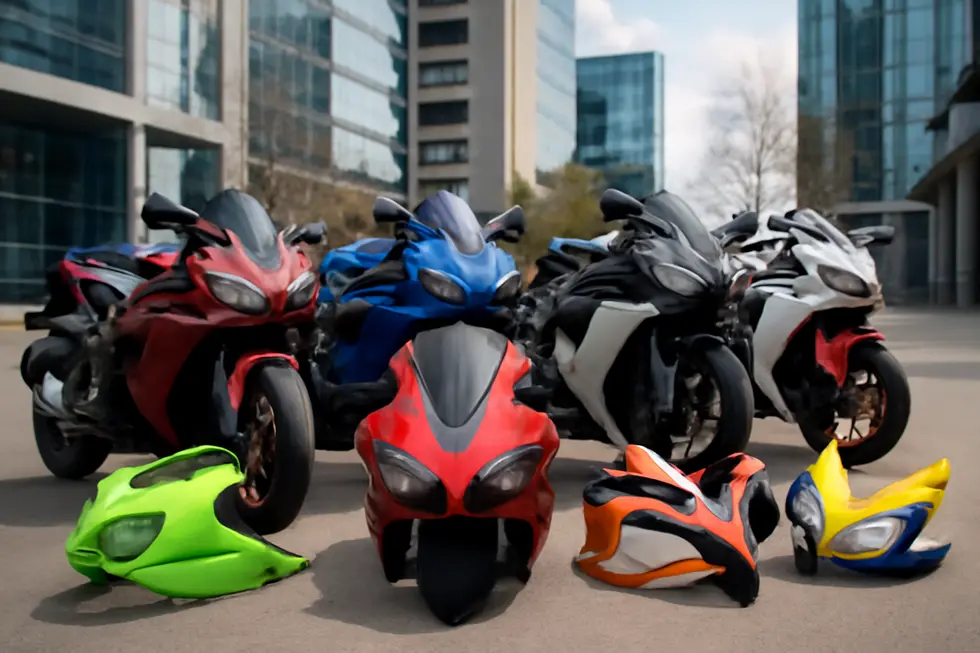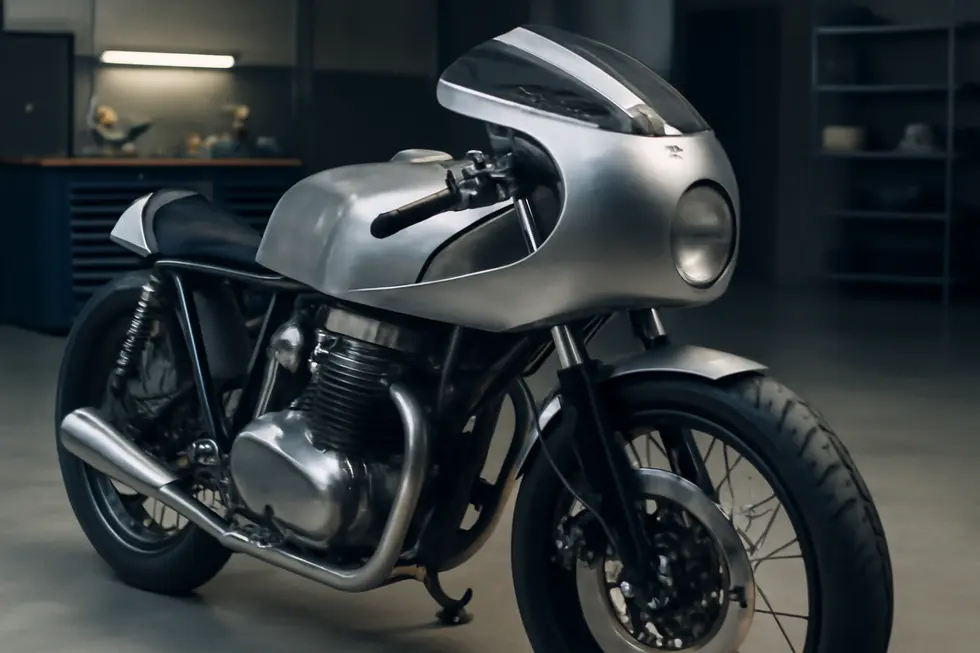Maximizing Motorcycle Fairing Protection: A Business Owner’s Guide to Preventing Damage and Enhancing Durability
October 13, 2025 | by summitfairings
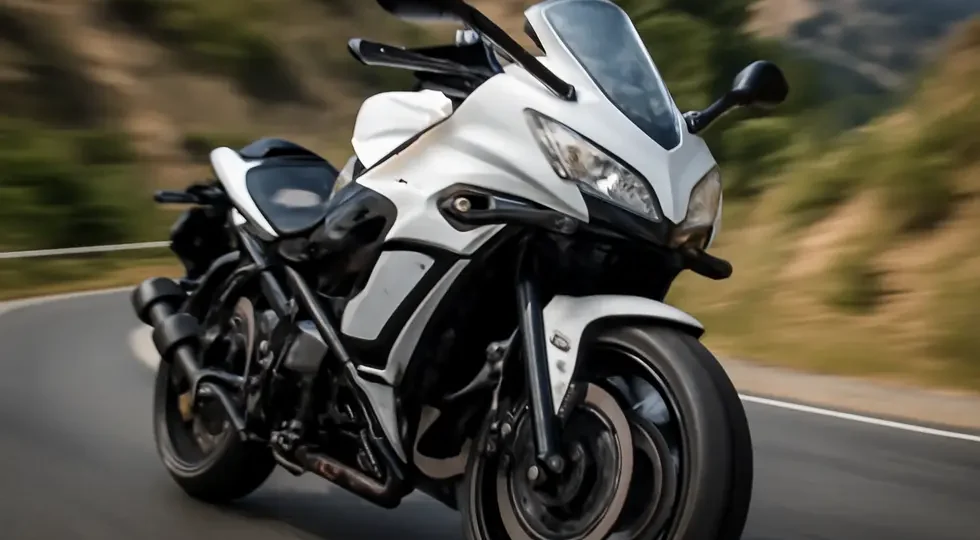
Introduction
Motorcycle fairing protection is a critical factor in preserving the integrity of motorcycles, protecting key components such as the engine, radiator, and fairings themselves from damage caused by accidents or routine wear and tear. For business owners in the motorcycle industry—whether retailers, service providers, or customizers—understanding the mechanisms and benefits of fairing protection is essential for advising clients, optimizing product offerings, and ensuring customer satisfaction. This comprehensive guide delves into the integral aspects of fairing protection, starting with the foundational role and importance of protection, progressing through key accessory types like frame sliders, crash bars, and crash bobbins, and culminating in installation best practices and optimization strategies. Each chapter equips business owners with actionable insights to better serve their markets and enhance value through effective protection solutions.
Tables of Contents
Chapter 1: Introduction to Motorcycle Fairing Protection: Role and Importance
- Innovations in Motorcycle Fairing Protection: Enhancing Safety Through Technology
- Balancing Cost and Care: Economic and Maintenance Dimensions of Motorcycle Fairing Protection
- The Crucial Intersection of Rider Safety and Societal Benefits in Motorcycle Fairing Protection
Chapter 2: Frame Sliders in Motorcycle Fairing Protection: Types and Impact Resistance
- Exploring Frame Slider Varieties: Fairing, Frame, and Front Axle Protection Strategies
- Innovative Materials and Engineering Behind Frame Sliders for Maximum Impact Resistance
- Maximizing Impact Resistance with Frame Sliders: Strategic Mounting and Material Strength in Fairing Defense
Chapter 3: Crash Bars and their Role in Motorcycle Fairing Protection
- Engineering Strength and Material Science Behind Effective Motorcycle Crash Bars
- How Crash Bars Enhance Motorcycle Safety and Beyond Fairing Defense
- Securing Impact Defense: The Installation and Protective Advantages of Crash Bars
Chapter 4: Crash Bobbins: Localized Solutions for Motorcycle Fairing Protection
- Innovative Materials and Rotational Designs Elevating Crash Bobbin Performance
- Optimizing Mounting and Installation for Effective Crash Bobbin Protection
- How Crash Bobbins Compare to Other Protective Gear in Safeguarding Motorcycle Fairings
Chapter 5: Installation Considerations for Motorcycle Fairing Protection Components
- Ensuring Perfect Fit: Compatibility and Strategic Mounting for Motorcycle Fairing Protection
- Navigating the Installation Journey: DIY Versus Professional Approaches to Fairing Protection
- Balancing Durability, Visual Integrity, and Rider Safety in Fairing Protection Installation
Chapter 6: Optimizing Motorcycle Fairing Protection: Choosing the Right Accessories
- Maximizing Impact Defense: How Frame Sliders Elevate Motorcycle Fairing Protection
- Maximizing Fairing Durability Through Material Choice and Protective Enhancements
- Enhancing Fairing Durability with Strategic Protective Accessories
Chapter 1: Introduction to Motorcycle Fairing Protection: Role and Importance
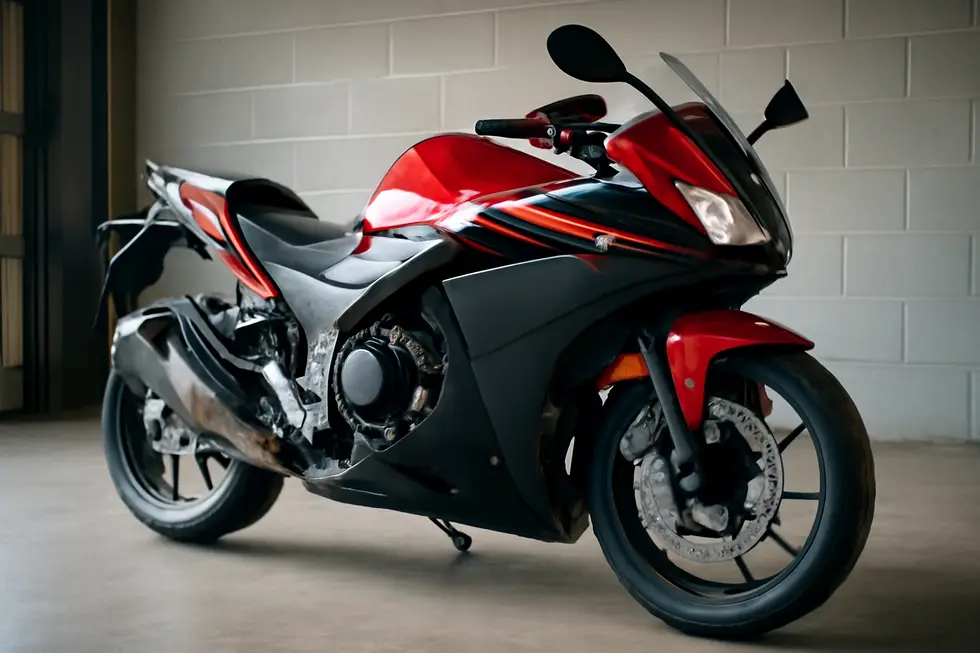
1. Innovations in Motorcycle Fairing Protection: Enhancing Safety Through Technology
Technological innovations have significantly transformed motorcycle fairing protection, advancing both rider safety and machine durability. Modern fairings now utilize cutting-edge materials like carbon fiber, Kevlar, and advanced high-impact polymers. These substances offer superior strength while remaining lightweight, enabling fairings to absorb and disperse collision forces more effectively without compromising performance.
Aerodynamics have also seen fine-tuning, with designs focusing on optimizing airflow to stabilize the bike at high speeds. Improved stability reduces the risk of accidents caused by loss of control or wind disturbances. Beyond structural improvements, fairings increasingly integrate smart systems that interact with the rider’s safety gear. For instance, embedded sensors can detect sudden impacts and prompt immediate responses such as activating airbags or initiating emergency communication protocols.
Visibility enhancements, such as built-in lighting and reflective accents, are becoming standard. These features address the critical issue of rider visibility, lowering accident risks by making motorcycles more noticeable to other motorists.
Together, these technological strides in material science, design, and electronic integration reinforce the essential protective role fairings play. They not only shield vital motorcycle components but also serve as a dynamic element within the broader safety ecosystem, directly contributing to injury mitigation and accident prevention. For a deeper understanding of the options available, a variety of specialized resources offer comprehensive insights into modern motorcycle fairings and protection upgrades, including detailed guides on advanced fairing technologies.
2. Balancing Cost and Care: Economic and Maintenance Dimensions of Motorcycle Fairing Protection
Proper motorcycle fairing protection extends beyond safety and aesthetics—it represents a significant factor in managing long-term economic and maintenance demands. Investing in high-quality fairings made from durable materials like ABS plastic may carry an initial cost but effectively reduces the frequency and expense of repairs or replacements. This upfront expenditure balances out when considering diminished damage and better resale value, lowering the total cost of ownership. In addition, a well-maintained fairing can minimize cosmetic insurance claims, which indirectly cuts overall expenses.
Maintenance plays a critical role in preserving fairing integrity and appearance. Routine care, including gentle washing, shielding from excessive sun, and applying UV-protective covers or coatings, helps prevent issues like fading and oxidation. Protective waxes or ceramic layers create barriers against environmental wear, extending the lifespan and maintaining fairing performance. These preventive efforts are far more economical than addressing surface damage or repainting after deterioration.
Ultimately, the economic and maintenance strategies surrounding fairing protection serve to uphold both the motorcycle’s functional efficiency and market value. Thoughtful care coupled with quality components ensures that riders enjoy better performance stability while managing ongoing costs wisely. For deeper insights on choosing cost-effective and durable fairings, exploring specialized resources such as this comprehensive guide to affordable motorcycle fairings can be highly beneficial.
3. The Crucial Intersection of Rider Safety and Societal Benefits in Motorcycle Fairing Protection
Motorcycle fairing protection plays an essential role beyond preserving a bike’s aesthetics and mechanical integrity—it significantly impacts rider safety and public welfare. Fairings shield riders from harsh wind, debris, and minor impacts, enhancing stability and control to reduce accident risks. By absorbing some crash forces, fairings can help lower injury severity, providing physical protection as part of a comprehensive safety system. This protection extends societal benefits by decreasing healthcare expenses through fewer injuries and minimizing economic losses tied to repairs and insurance claims. The effectiveness of fairings is augmented when combined with helmets and sound riding practices, emphasizing a holistic approach to safety. Furthermore, environmental factors like road conditions and enforcement of safety laws influence overall motorcyclist risk, making well-maintained fairings a vital element in safer riding environments. Together, these factors contribute to reduced fatalities and greater public safety, underscoring fairing protection’s indispensable place within broader societal efforts to improve motorcycle safety standards. For those interested in maintaining the longevity and effectiveness of their fairings, exploring expert maintenance tips and protective solutions can make a substantial difference.
Chapter 2: Frame Sliders in Motorcycle Fairing Protection: Types and Impact Resistance
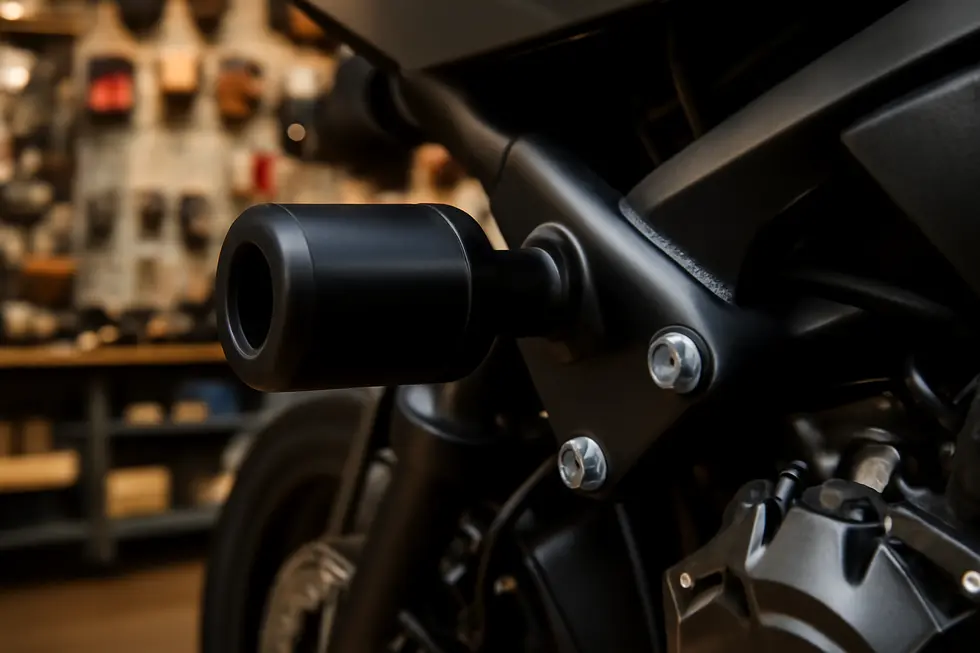
1. Exploring Frame Slider Varieties: Fairing, Frame, and Front Axle Protection Strategies
Motorcycle fairing protection relies heavily on choosing the right type of frame sliders tailored to the bike’s structure and rider’s needs. Fairing mounted sliders attach directly to the plastic or composite panels, offering a first line of defense by absorbing abrasion and minor impacts. While practical for lighter protection, they often lack the durability required for severe crashes due to their mounting on less robust materials. In contrast, frame mounted sliders anchor to the motorcycle’s solid frame. This placement allows them to effectively disperse impact forces away from critical components such as the engine and radiator. Typically constructed from a blend of aluminum offsets and shatter-resistant polymers, these sliders endure high stress while minimizing damage. Complementing these two are front axle sliders, which safeguard the front suspension, forks, and brake assembly by preventing direct contact with the ground during falls. Crafted with billet aluminum and replaceable polymer parts, they balance protection with minimal added weight. Many riders combine these slider types to achieve comprehensive coverage, balancing ease of installation, impact resistance, and protection focus. For more on selecting accessories that enhance your bike’s look and defense, explore the extensive guides at Summit Fairings blog.
2. Innovative Materials and Engineering Behind Frame Sliders for Maximum Impact Resistance
Frame sliders merge advanced polymers and high-grade aluminum alloys to deliver critical protection for motorcycle fairings. The external slider components typically feature polymers like nylon, Delrin, and ultra-high-molecular-weight polyethylene (UHMW), renowned for exceptional abrasion resistance and energy absorption. UHMW stands out for its shatter-proof durability, UV stability, and resilience in cold conditions, making it ideal for enduring the rigors of sliding impacts. Internally, aerospace-grade aluminum, especially 6061-T6 alloys, reinforces the slider’s structure, providing strong, lightweight support that resists corrosion.
These aluminum inserts form precise mounting points that secure the slider firmly to the motorcycle frame, preventing bolt failure or tearing upon impact. Modern manufacturing techniques such as CNC machining and anodizing enhance both dimensional accuracy and corrosion protection for these metallic components. The design philosophy carefully balances hardness to minimize slide speed with energy absorption capabilities to avoid fracturing, thus effectively dissipating crash forces.
Proper installation is crucial; frame sliders must anchor to structurally sound areas to distribute impact stresses uniformly without compromising the bike’s integrity. This integration of engineered polymers with robust aluminum inserts creates a synergy that shields fairings from abrasion and impact damage, extending component longevity and safeguarding rider investment. For more on effective motorcycle protection accessories, explore unmatched choices in motorbike fairings and supplemental gear.
3. Maximizing Impact Resistance with Frame Sliders: Strategic Mounting and Material Strength in Fairing Defense
Frame sliders are critical components that significantly improve a motorcycle’s defense against damage by absorbing and dispersing impact energy during falls or collisions. Their protective effectiveness hinges on the use of robust, impact-resistant materials coupled with precise mounting techniques that secure them directly to the motorcycle’s frame. High-quality composites or reinforced plastics commonly form slider surfaces, designed to deform or wear upon impact to safeguard more vulnerable fairing panels and the engine casing beneath.
Equally important is the mounting position, which must strategically align with the frame’s strongest points to channel impact forces away from the fairing. Proper installation ensures the slider bears the brunt of crashes, acting as a sacrificial buffer that preserves the bike’s structural integrity and cosmetic finish. The size and shape of the slider also influence performance; while larger sliders provide greater protection, they must balance aerodynamic and aesthetic concerns.
In practical terms, this optimized combination of material strength and mounting strategy reduces costly repairs and extends the lifespan of motorcycle fairings. Riders benefit from enhanced safety and confidence knowing that their investment in protective accessories effectively mitigates common impact damage scenarios. For more detailed information on tailored solutions for motorcycle protection, explore comprehensive resources on affordable motorcycle fairings at Summit Fairings.
Chapter 3: Crash Bars and their Role in Motorcycle Fairing Protection
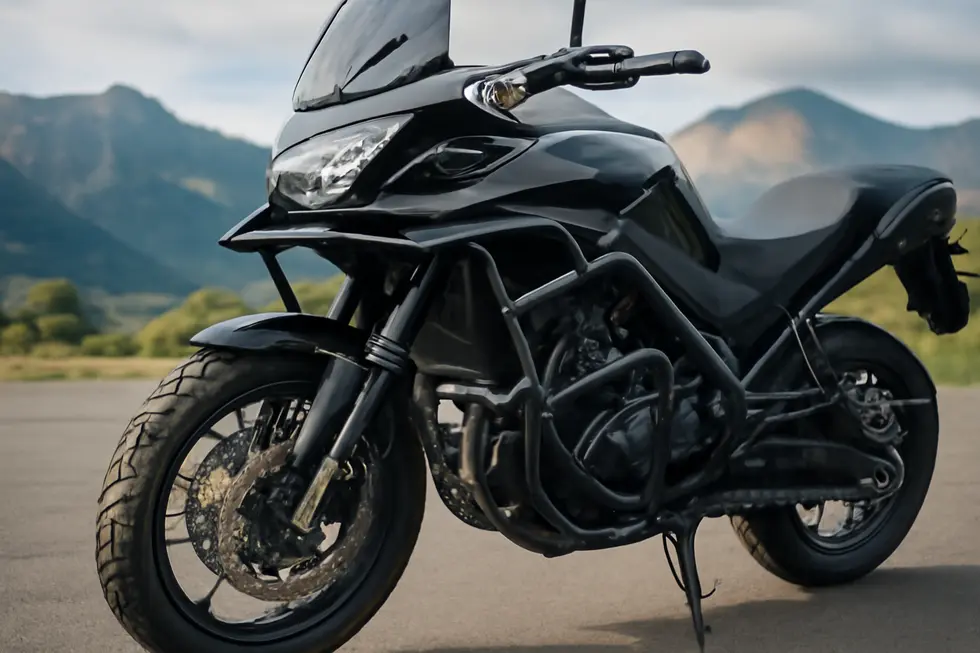
1. Engineering Strength and Material Science Behind Effective Motorcycle Crash Bars
Crash bars are engineered to safeguard motorcycle fairings and critical components by absorbing and dissipating impact energy efficiently. Their construction balances strength, durability, and weight, making material selection paramount. Steel, particularly stainless variants like OH18N9 used in premium models, offers exceptional toughness and abrasion resistance due to its thickness and tubular design, which is essential for withstanding sliding impacts and collisions. Alternatively, aluminum alloys provide a lightweight solution with engineered enhancements—modifying recycled aluminum with copper and magnesium improves hardness and wear resistance, making these bars resilient under dynamic stresses without adding excessive mass.
Though less common for crash bars, composite materials such as carbon fiber reinforced polymers largely influence fairing design, contributing high strength-to-weight ratios and energy absorption capabilities compatible with the protective goals of crash bars. The engineering process includes rigorous dynamic testing and simulation to ensure materials respond appropriately under high strain rates typical in crashes. This ensures the crash bars absorb impacts without transferring excessive force to the motorcycle frame or fairings. Additionally, design integration caters to various motorcycle styles, ensuring crash bars protect vital parts without hindering performance or rider control.
For a deeper dive into fairing protection solutions, explore the extensive insights available at Summit Fairings.
2. How Crash Bars Enhance Motorcycle Safety and Beyond Fairing Defense
Crash bars offer multifaceted protection that goes well beyond safeguarding motorcycle fairings. Primarily constructed from robust steel tubing, these bars shield critical components like the engine, transmission, and drivetrain from direct impact during tip-overs or crashes. By absorbing and dispersing collision forces, they act as sacrificial guards, significantly reducing costly mechanical damage. Unlike fairings that mainly guard against wind and reduce drag, crash bars form a sturdy barrier preventing the bike from digging into pavement or flipping, thereby limiting the extent of overall damage.
Beyond protecting mechanical parts, crash bars also improve rider ergonomics by providing alternate footrests, allowing varied leg positions to reduce fatigue on long journeys. Their design often extends coverage to vulnerable areas such as saddlebags and lower bodywork, buffering these from low-speed falls or slides. Additionally, crash bars contribute indirectly to rider safety by lessening the chance of the motorcycle pinning the rider’s leg during a fall. They also serve as convenient mounting points for accessories, adding both function and a rugged aesthetic appeal.
Together, crash bars complement fairings by providing comprehensive protection and practical benefits, helping riders preserve essential motorcycle components while enhancing comfort. For insights on pairing protective gear effectively, explore our resource on discover affordable motorcycle fairings at Summit Fairings.
3. Securing Impact Defense: The Installation and Protective Advantages of Crash Bars
Crash bars serve as fundamental protective shields for motorcycles, specifically designed to safeguard the fairings and crucial mechanical parts during crashes or tipovers. When properly installed onto the motorcycle’s frame or skid plate, these sturdy metal components absorb and redistribute impact forces, preventing direct contact between the ground and sensitive areas like the engine, radiator, and body panels. This buffer zone significantly reduces costly damage to fairings, which often suffer in low-speed falls. Beyond protecting the bike, crash bars also offer some defense to the rider’s legs by limiting the bike’s collapse. The installation process requires precise alignment with designated mounting points using bolts and washers, followed by carefully torquing fasteners to manufacturer specifications for maximum effectiveness and durability. Multi-part crash bars demand secure joining of sections before final tightening to ensure stability. Such meticulous installation guarantees that crash bars perform as intended, mitigating mechanical damage and minimizing repair expenses. For riders seeking to enhance their motorcycle’s resilience and safety, understanding and correctly fitting crash bars is essential. More on optimizing your bike’s defensive gear can be explored at the Explore the Best Motorcycle Fairings at Summit Fairings.
Chapter 4: Crash Bobbins: Localized Solutions for Motorcycle Fairing Protection
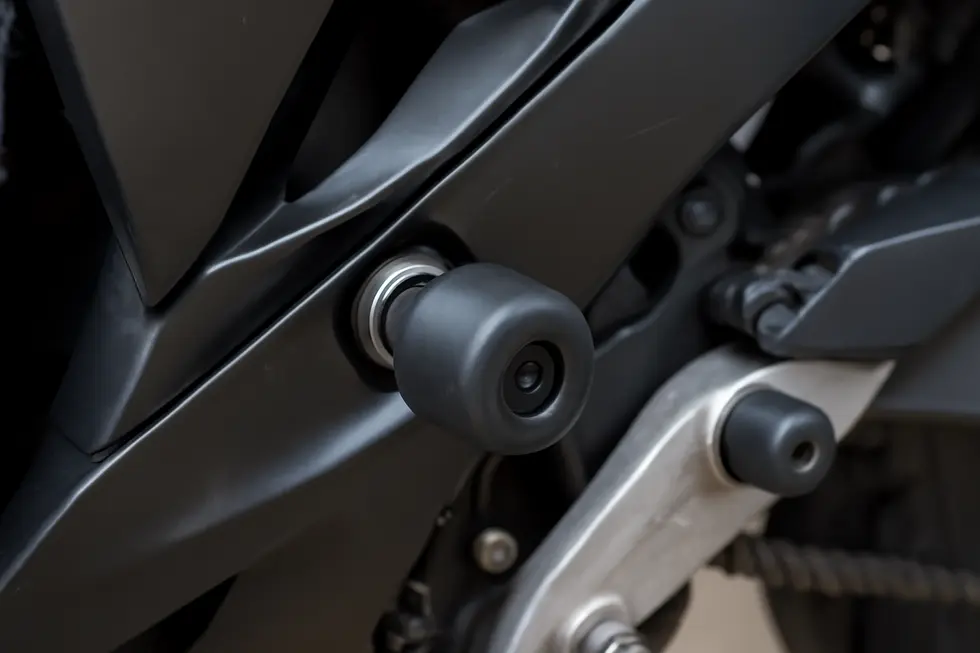
1. Innovative Materials and Rotational Designs Elevating Crash Bobbin Performance
Motorcycle crash bobbins have evolved significantly through advances in material science and engineering design aimed at optimizing localized fairing protection. Modern bobbins often combine durable nylon, prized for its abrasion resistance and toughness, with lightweight yet rigid aluminum bases. This synergy balances effective impact absorption and structural strength, reducing damage during crashes without adding excessive weight. A notable innovation is the introduction of rotating bobbin heads mounted on fixed aluminum platforms. This rotational capability allows the bobbin to dissipate impact forces more efficiently by moving slightly upon contact, limiting wear on the fairing and wheel while dispersing kinetic energy through controlled motion. Such dynamic designs not only enhance the longevity of the protection components but also improve the bike’s overall crash resilience. Careful tailoring to fit specific motorcycle frames and fairing shapes ensures that bobbins provide targeted shielding exactly where needed. Manufacturers continue to refine these solutions with intellectual property protections signaling ongoing research into sophisticated configurations. Together, these material and rotational design features represent a shift toward more intelligent, model-specific crash bobbin solutions that maximize localized defense and durability. For insights into related protective gear options, consider exploring the comprehensive motorcycle fairings selection provided by Summit Fairings.
2. Optimizing Mounting and Installation for Effective Crash Bobbin Protection
Crash bobbins and frame sliders serve as critical localized defenses for motorcycle fairings, designed to absorb impact and prevent costly damage. The effectiveness of these devices greatly depends on their mounting and installation techniques. Proper mounting involves securely attaching crash bobbins to robust parts of the motorcycle, often using bolts or double-threaded rods that allow easy replacement if sliders become compromised. This method also ensures impact forces disperse efficiently without transferring excessive stress to the frame or fairing.
Installation must focus on precise alignment and tight fastening to maximize protective function. Misaligned or loosely installed bobbins can undermine the intended impact absorption, potentially exacerbating damage during a fall. Some motorcycles utilize through-engine bolts for stronger attachment points, which distribute forces over a broader area for enhanced protection.
Selecting materials that balance strength with shock absorption is essential in these localized solutions. By integrating well-engineered mounting strategies with durable, impact-resistant components, riders can significantly reduce damage risks. This thoughtful combination offers tailored protection that fits specific motorcycle designs while preserving performance and safety. For more insights on protective accessories, visit your ultimate source for affordable motorcycle fairings.
3. How Crash Bobbins Compare to Other Protective Gear in Safeguarding Motorcycle Fairings
Crash bobbins offer a distinctive approach to motorcycle fairing protection by focusing on localized impact absorption. Unlike crash bars or engine guards, which shield broader sections like the engine and frame with heavier, more visible components, crash bobbins are compact and lightweight. Their strategic placement on fairing edges or frame mounts allows them to minimize damage from minor falls, scrapes, or tip-overs without significantly altering the bike’s aesthetics. While skid plates and fork protectors defend underbody and suspension parts, they do not address fairing vulnerabilities directly. Crash bobbins excel in preventing surface scratches, cracks, or localized damage, making them ideal for riders who prioritize preserving the bike’s exterior condition with subtle modifications. Conversely, crash bars provide a higher level of defense in severe crashes by protecting critical mechanical areas, but at the cost of added weight and bulk. Often, a layered defense combining crash bobbins with crash bars or skid plates yields the best balance, tailoring protection to the rider’s risk profile and riding style. For those interested in exploring options for stylish and efficient fairing protection, resources such as the explore the best motorcycle fairings at Summit Fairings offer valuable insights and accessory options.
Chapter 5: Installation Considerations for Motorcycle Fairing Protection Components
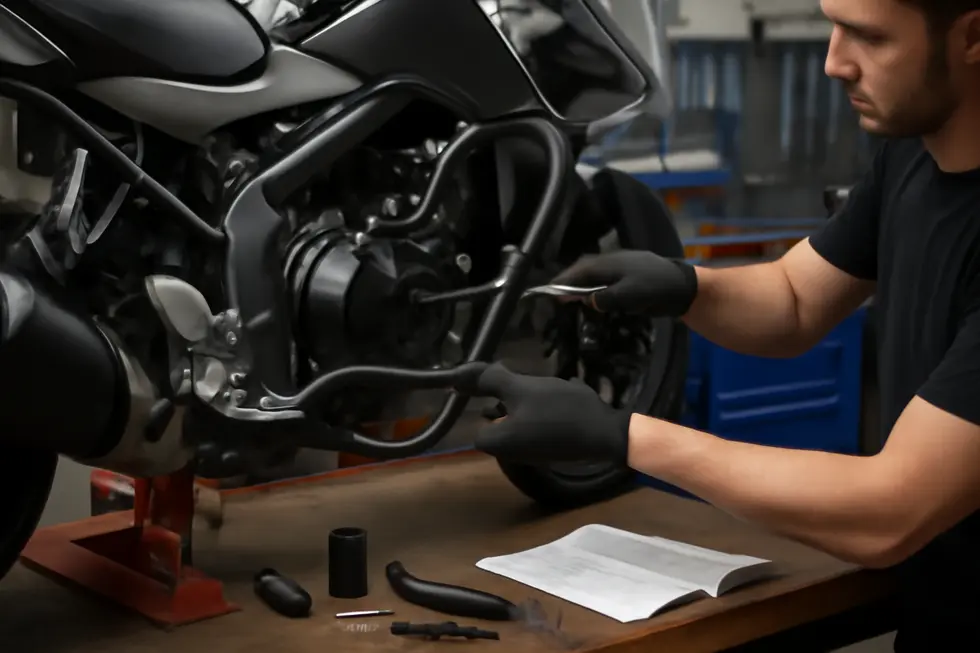
1. Ensuring Perfect Fit: Compatibility and Strategic Mounting for Motorcycle Fairing Protection
Selecting and installing motorcycle fairing protection requires meticulous attention to compatibility and mounting location to guarantee durability and efficiency. Protective components like crash bars or sliders are often tailored to specific fairing models or styles, making it essential to verify that each part matches both the motorcycle’s fairing type and dimensions. Components crafted from materials such as ABS plastic or stainless steel not only offer strength but also must align with factory specifications or aftermarket designs for optimal integration. The choice of mounting points plays a pivotal role: strong structural areas on the frame or fairing, such as engine mounts, ensure shock absorption spreads impact forces evenly while preserving fairing integrity. Installations that use secure hardware—bolts, washers, and pre-drilled kits—facilitate a seamless fit with minimal tools, while maintaining rider ergonomics and access to maintenance tasks. Additionally, some protection accessories allow bolt-on installation, avoiding the need for bonding or modifications that could complicate setup. Consideration for accessory integration, such as additional lighting pods, and durable finishes like powder coating also contribute to preserving both function and visual appeal over time. These careful compatibility and mounting considerations help riders achieve reliable, efficient fairing protection tailored to their motorcycle’s design and usage needs. For more insights on selecting compatible fairings and accessories, visit Explore the Best Motorcycle Fairings at Summit Fairings.
2. Navigating the Installation Journey: DIY Versus Professional Approaches to Fairing Protection
Installing motorcycle fairing protection components demands meticulous care, beginning with the precise removal of fairings. This involves unscrewing bolts and clips that secure various panels using appropriate tools like socket wrenches or screwdrivers. Positioning protection parts such as frame sliders or crash bars requires alignment with factory mounting points, following manufacturer torque specifications to ensure robustness without causing stress or cracks in the fairings. Reinstalling the fairings afterward must preserve a perfect fit to avoid gaps or interference with controls.
While professional installation offers the advantage of specialized tools, expert knowledge, and efficient workflow—minimizing the risk of damage and often including work warranties—many experienced riders opt for DIY installation. This path demands thorough mechanical aptitude, time, and patience, as well as careful adherence to detailed instructions. Using the correct hardware supplied with kits and maintaining proper torque are essential steps regardless of the method chosen. Preparation such as cleaning mounting areas and working on stable stands improves outcomes and safety.
Overall, the choice between professional and DIY installation balances cost, confidence, and the critical nature of protecting expensive fairings and components, ensuring longevity and rider safety. For practical guidance, riders can explore instructional resources that demonstrate comprehensive step-by-step procedures.
3. Balancing Durability, Visual Integrity, and Rider Safety in Fairing Protection Installation
Achieving effective motorcycle fairing protection involves a careful balance of maintenance needs, aesthetic integrity, and safety constraints during installation. Protective components like crash bars, frame sliders, and fairing protectors must be installed to allow easy access for routine inspections and repairs, ensuring they remain functional without complicating maintenance. The materials chosen—often high-grade carbon fiber or ABS plastics—not only provide durable defense but also preserve the motorcycle’s design lines and visual appeal. A precise fit is essential; any misalignment can create unsightly gaps or stress points that undermine the fairing’s appearance and structural integrity. Safety considerations further influence installation strategies. Robust fabrication methods and secure mounting are vital to prevent flex or vibration that could interfere with bike performance or rider control. Aerodynamically designed fairings complement protective hardware by maintaining stability and cooling, especially at highway speeds. Poorly fitted or improperly installed components risk compromising electronic safety systems and control responsiveness, which can endanger the rider. Therefore, an integrated approach—respecting durability, style, and safety—is key to optimizing fairing protection and maintaining motorcycle performance. For those interested, exploring detailed insights on elevated-quality fairings can deepen understanding and options, such as those shared at Summit Fairings’ blog.
Chapter 6: Optimizing Motorcycle Fairing Protection: Choosing the Right Accessories
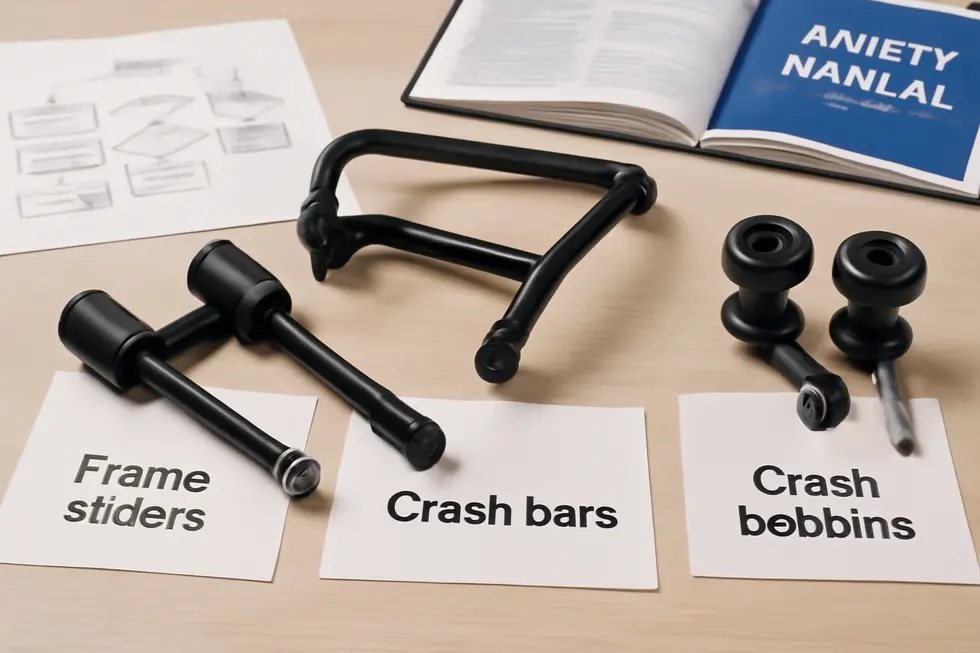
1. Maximizing Impact Defense: How Frame Sliders Elevate Motorcycle Fairing Protection
Frame sliders represent a cornerstone in optimizing motorcycle fairing protection by directly anchoring to sturdy points on the bike’s frame. Unlike fairing-mounted sliders that attach to the plastic bodywork and offer limited defense during serious slides, frame-mounted sliders distribute impact forces more effectively, safeguarding vital components such as the engine and frame itself. Selecting the right frame sliders involves prioritizing those that secure through strong engine mounts with longer bolts, ensuring a reliable and robust barrier against crashes. Although some installations may require careful fairing modification, this tradeoff often results in superior protection that outweighs the inconvenience. Quality frame sliders commonly feature durable materials like precision-machined aluminum, engineered to resist wear and minimize friction during contact. Compatibility is equally crucial; sliders custom-designed for specific motorcycle models guarantee proper fitment and coverage, preventing weak points in protection. While frame sliders provide a strong first line of defense, combining them with complementary accessories such as crash bars can further enhance the bike’s resilience in demanding riding conditions. Thoughtful selection and installation of frame sliders ultimately extend the life of motorcycle fairings and critical chassis parts, making them essential for riders who value both safety and longevity in their gear. For additional insight into protective options, explore expert discussions at your ultimate source for affordable motorcycle fairings.
2. Maximizing Fairing Durability Through Material Choice and Protective Enhancements
Enhancing motorcycle fairing durability hinges on selecting superior materials and applying targeted protective solutions. Injection-molded ABS plastic, favored for its impact resistance and precise OEM fit, forms the foundation of durable fairings. Incorporating heat shields further guards against engine heat, preserving material integrity over time. To safeguard the surface from environmental and physical wear, ceramic coatings offer a semi-permanent barrier that repels water, dirt, and UV rays, preserving gloss and preventing oxidation. Complementary to coatings, paint protection films act as a removable shield that absorbs minor scratches and often self-heals with warmth, maintaining the fairing’s pristine appearance.
Beyond surface treatments, structural enhancements such as windshield and fairing extensions crafted from carbon fiber or similarly durable materials broaden defensive coverage against wind, rain, and debris. Steel engine bumper guards and crash bars absorb impact forces, protecting vulnerable zones including the engine and radiator. For peak effectiveness, accessories must balance durability, heat resistance, and aerodynamic efficiency, ensuring protection without compromising performance.
By integrating high-quality materials with thoughtful protective additions, riders can significantly extend their fairings’ lifespan while maintaining optimal appearance and function. This approach not only reduces maintenance costs but also supports a smoother, more comfortable ride. For a deeper dive into selecting appropriate fairing options, explore detailed insights at Summit Fairings’ dedicated motorcycle fairings blog.
3. Enhancing Fairing Durability with Strategic Protective Accessories
Optimizing motorcycle fairing protection requires selecting accessories that complement the bike’s structure and riding conditions. Among the most effective solutions are frame-mounted sliders, which attach directly to reinforced points on the motorcycle’s frame. These sliders excel at absorbing and distributing impact forces during crashes or slides, minimizing damage to critical components. Unlike fairing-mounted sliders, which are easier to install but offer limited protection, frame sliders provide robust defense without compromising structural integrity.
Crash bars, crafted from tough steel tubing, shield vital parts such as the engine and radiator by creating a sturdy buffer zone. Their heavier construction makes them invaluable for riders facing rough terrain or higher risk scenarios. Meanwhile, handguards serve a dual role: they protect the rider’s hands from wind and debris while offering minor impact resistance that also helps safeguard the fairing edges.
Surface protection plays a crucial role too. Applying specialized coatings after polishing the fairing guards against UV degradation, oxidation, and light scratches, preserving both appearance and material strength. Upgrading to high-quality windshields tailored for your motorcycle not only improves aerodynamic efficiency but also decreases wind and debris exposure, indirectly enhancing fairing longevity.
Combining these accessories—frame sliders, crash bars, handguards, protective coatings, and quality windshields—creates a comprehensive defense system that balances impact resistance and rider comfort. For more insights into well-matched protective components, explore the extensive resources at Summit Fairings’ blog, your ultimate source for motorcycle fairing options.
Final thoughts
An informed approach to motorcycle fairing protection empowers business owners to provide superior advisory services and high-quality products that balance aesthetics, safety, and durability. Proper use of frame sliders, crash bars, and crash bobbins is essential in mitigating damage risks, reducing costly repairs, and enhancing overall bike longevity. By understanding installation nuances and selecting accessories tailored to specific rider needs, businesses can position themselves as trusted experts in motorcycle maintenance and safety. Ultimately, investing in comprehensive fairing protection not only safeguards valuable assets but also elevates rider confidence — an outcome beneficial for clients and businesses alike.
Ready to elevate your ride? Summit Fairings delivers premium, custom-fit fairings that blend style and durability. Whether you’re chasing speed or turning heads, we’ve got your bike covered. Don’t wait—transform your machine today. Click, customize, and ride with confidence. Your perfect fairing is just a few clicks away. Act now!
About us
undefined
RELATED POSTS
View all

